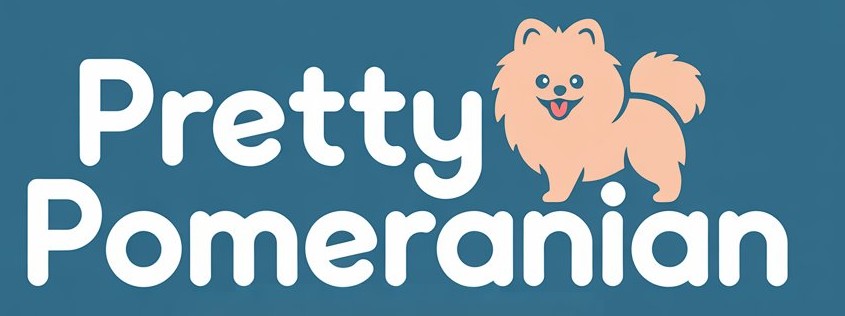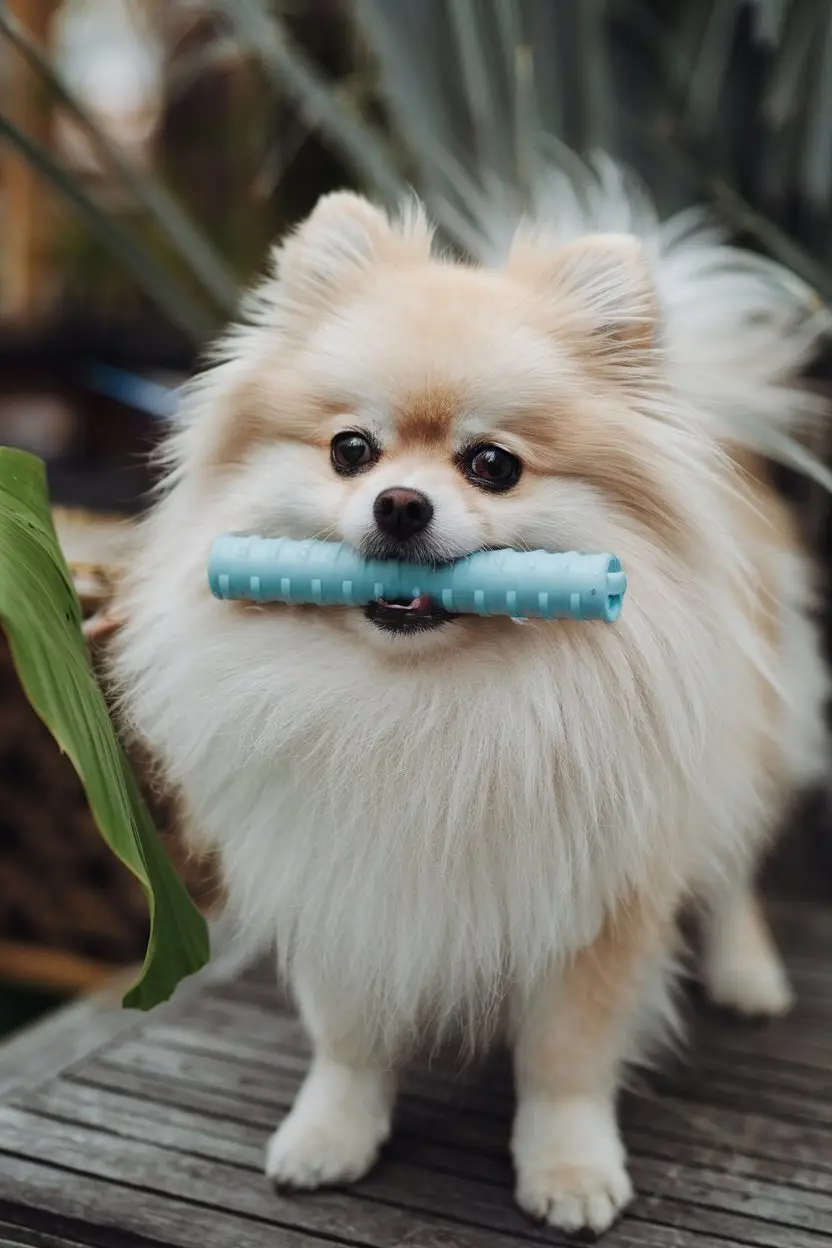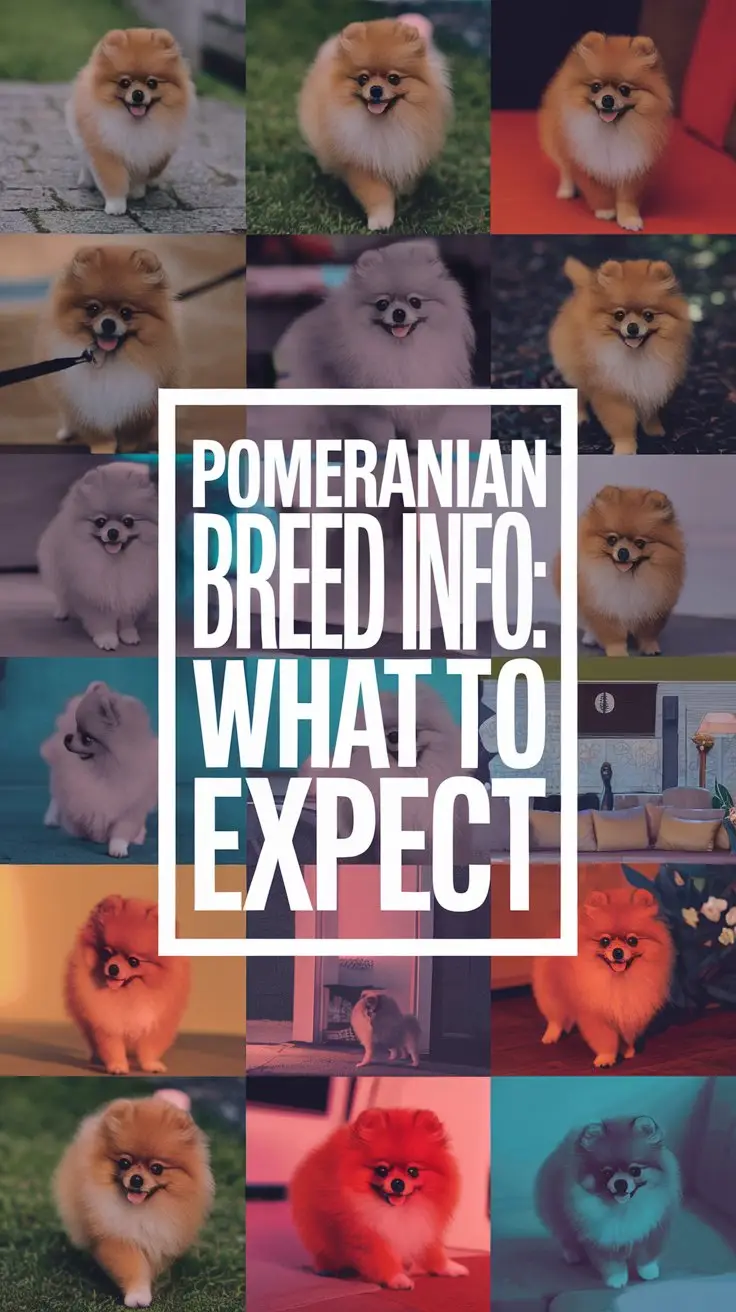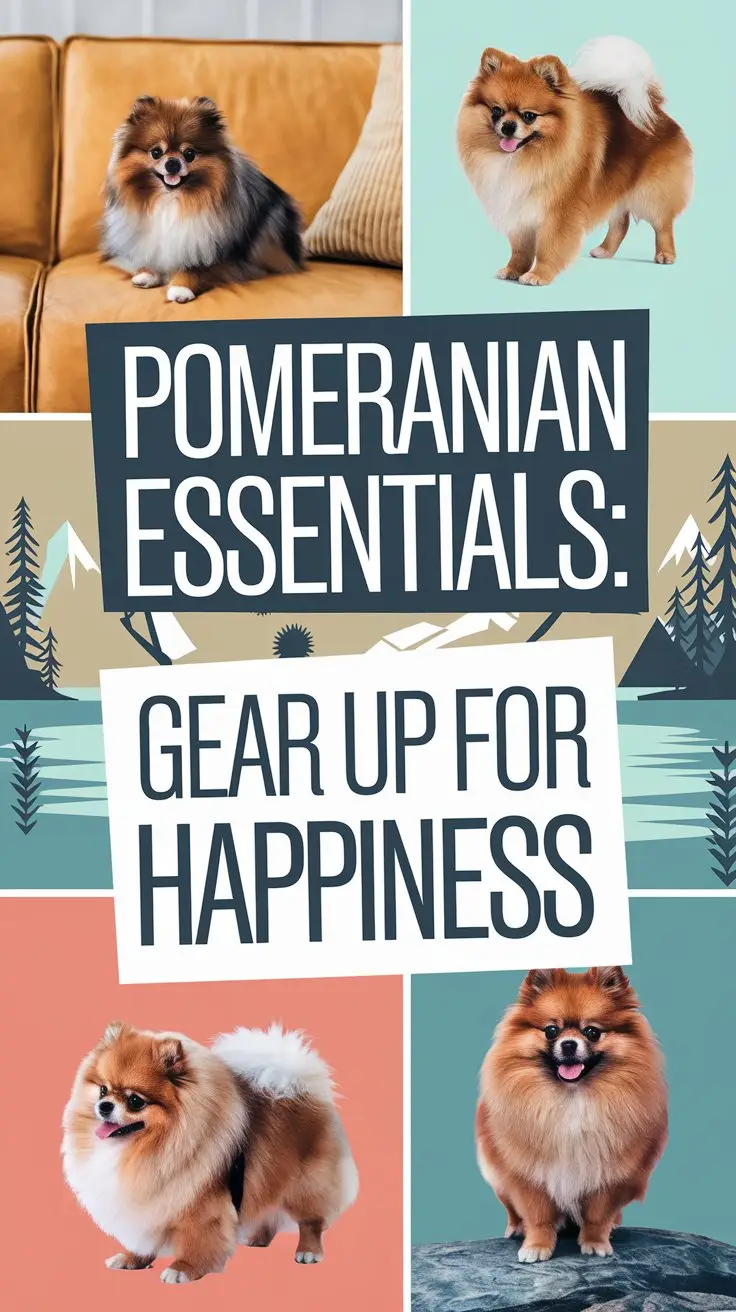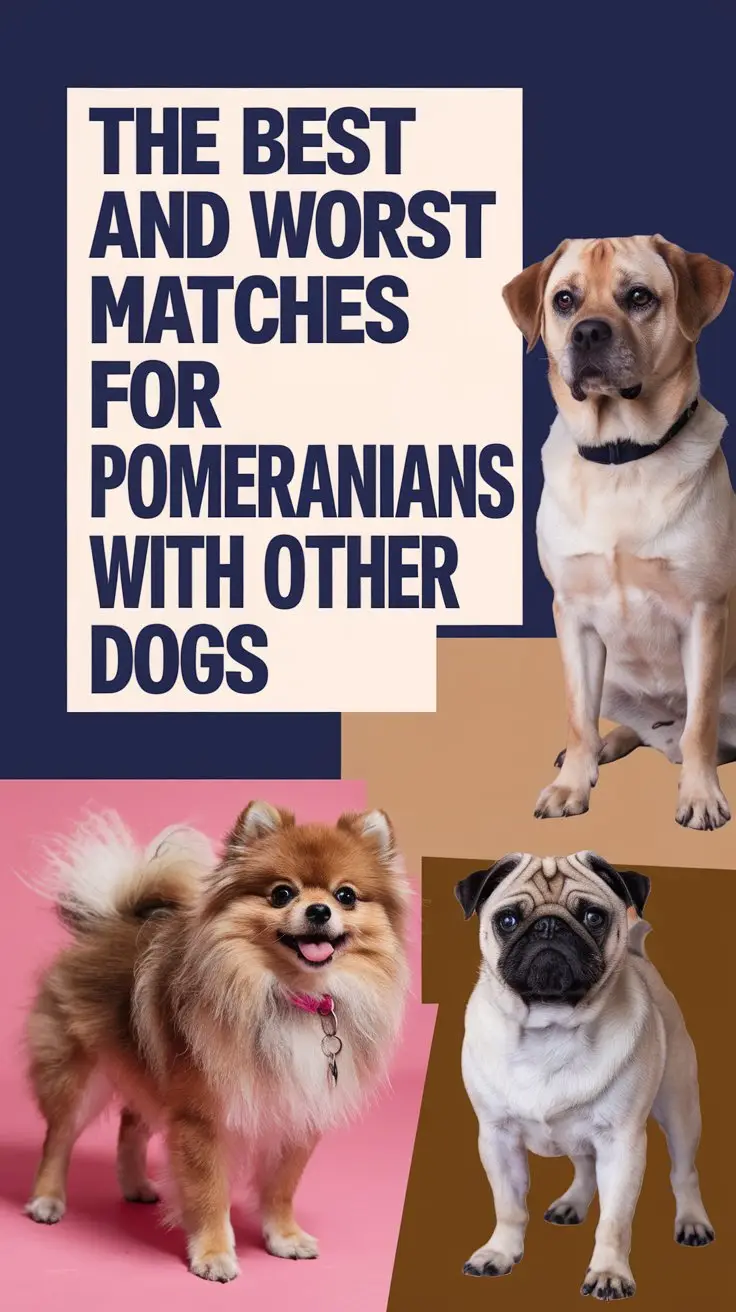Your Pom's fur is gonna change a lot during their first couple years! They start off with super soft puppy fur when they're born. Then around 4-6 months, they hit the "puppy uglies" stage – yep, it's exactly what it sounds like! Their baby fur falls out and looks kind of messy, but don't stress – it's totally normal. Between 9-12 months, they start getting their grown-up double coat – think fluffy undercoat with longer hair on top. By the time they're about 18 months old, you'll see that amazing pom-pom look everyone loves. It's pretty fun watching their fur transform from tiny fluff ball to full-on floof through all these different stages!
Birth to Puppy Coat
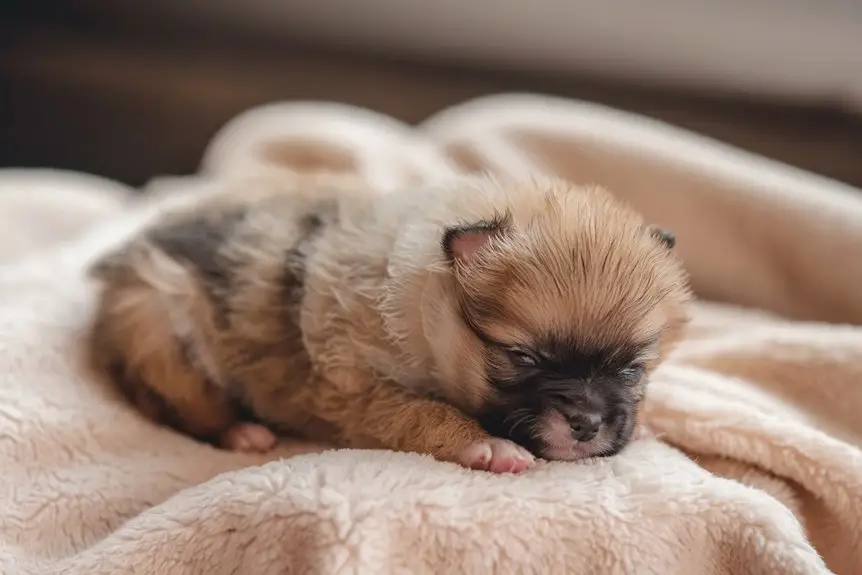
Your tiny Pom starts out looking totally different from what you'd expect – they've got just one layer of soft, fluffy fur instead of that thick double coat they'll get later.
They actually look pretty smooth at first, kind of like those short-haired dogs! During their early weeks, regular grooming habits should begin to maintain healthy fur development. Their thick double coat evolved from Arctic dog ancestors, helping them stay comfortable in various weather conditions. But just wait – each day brings new changes, and by the time they hit 8 weeks, your little one turns into this amazing fuzzy ball of fur.
Fun fact: your pup's already got all their hair follicles when they're born, and their genes have already decided what kind of coat they'll end up with.
While their color might switch up as they get bigger, these first few weeks are just the start of their awesome fur transformation.
You'll be amazed at how quickly their single-layer coat grows and changes during those first couple of months.
The Puppy Uglies Phase
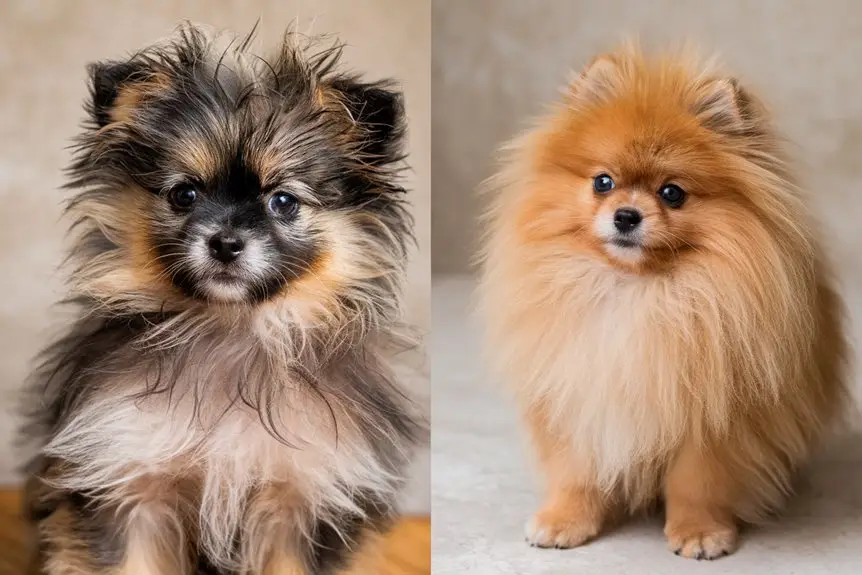
The "puppy uglies" is that wild phase when your Pom hits about 4-6 months old, and oh boy, does it bring some big changes! Your little fluff ball will start dropping their baby coat like crazy, leaving patchy spots while their grown-up fur comes in.
Don't stress – even though they look a bit messy, it's totally natural!
During this time, your pup's hormones are going nuts, which messes with their fur texture and might even switch up their color a bit.
You'll probably spot some balding areas or thin spots, especially around their legs, head, and back, as that baby fluff makes way for their thick adult double coat.
Sure, this awkward phase can stick around until their first birthday, but just remember – every single Pom goes through this weird stage.
No worries though – by the time they hit 1-2 years old, your furry friend will be rocking that gorgeous adult coat you've been waiting for!
Regular brushing with slicker brushes during this transition phase helps remove loose puppy fur while encouraging healthy adult coat growth.
Adult Coat Development
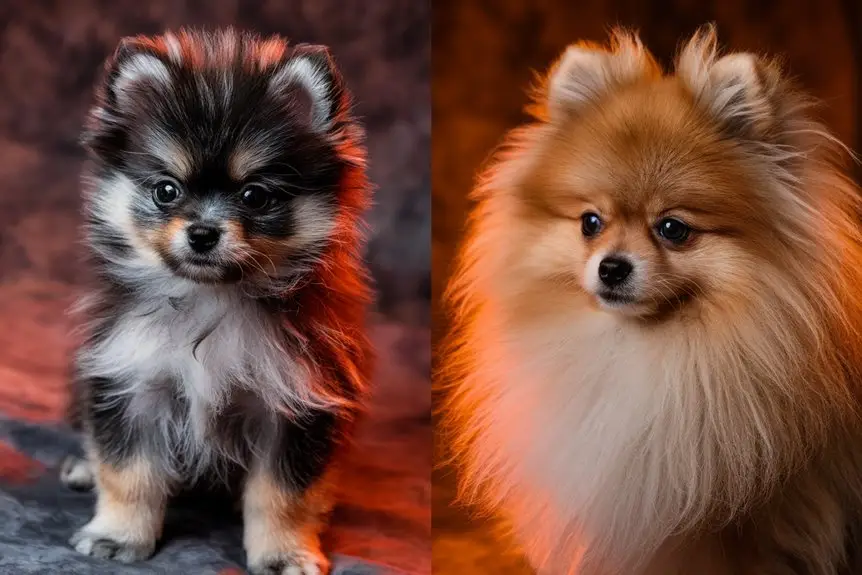
Your Pom's grown-up coat is amazing – it's got two layers that work together! There's a super soft and thick undercoat, plus a longer, fluffy outer layer of guard hairs on top. This combo gives your pup that adorable puffy look everyone loves, while keeping them warm and protected.
Want to know what to expect as your Pom grows up? Their puppy fluff starts changing around 4 months old when they first shed.
Between 9-12 months, you'll start seeing their adult coat coming in, and by 18 months, it'll be fully grown. During this time, your pup goes through what's called a junior molt while their coat gets its final, awesome thickness.
Just keep in mind – good genes and the right care are super important for getting that gorgeous double coat you're after!
You'll notice more seasonal coat changes during Spring and Fall when your Pomeranian naturally sheds its fur more heavily.
Natural Color Changes
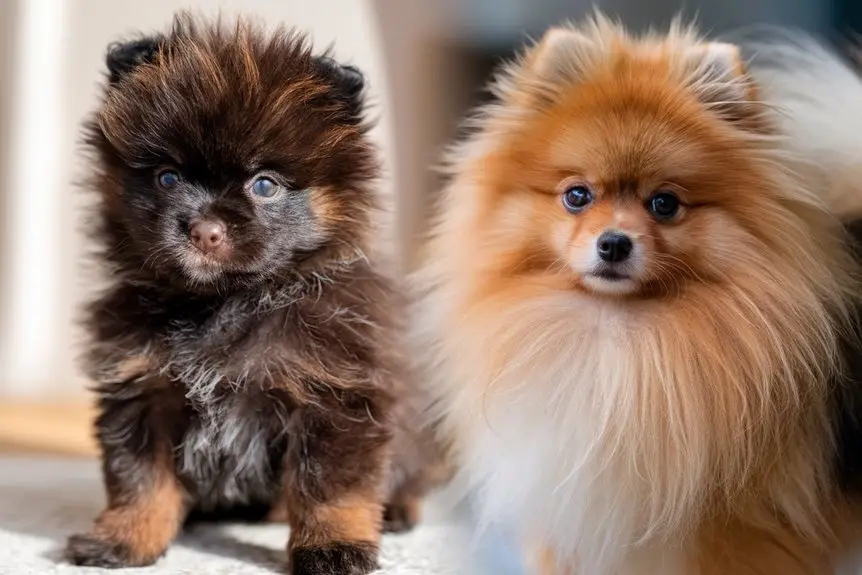
The way Pomeranian puppies change color is honestly mind-blowing! When you're raising your little fluffball, you'll see some amazing changes around 6 to 9 months – it's just part of their coat growing up.
It's not random at all – it's all about their genes doing their thing, with some being stronger than others.
Your little Pom gets their look from two main color makers: eumelanin (that's what makes them black) and phaeomelanin (that's what gives them those reddish colors).
Your puppy might get lighter, darker, or even end up with fun patterns like sable or brindle. While you can't really predict what's going to happen, it's totally normal.
These color transformations can result in any of the breed's standard shades, including orange and cream or striking blue variations.
Maintaining Healthy Coat Growth
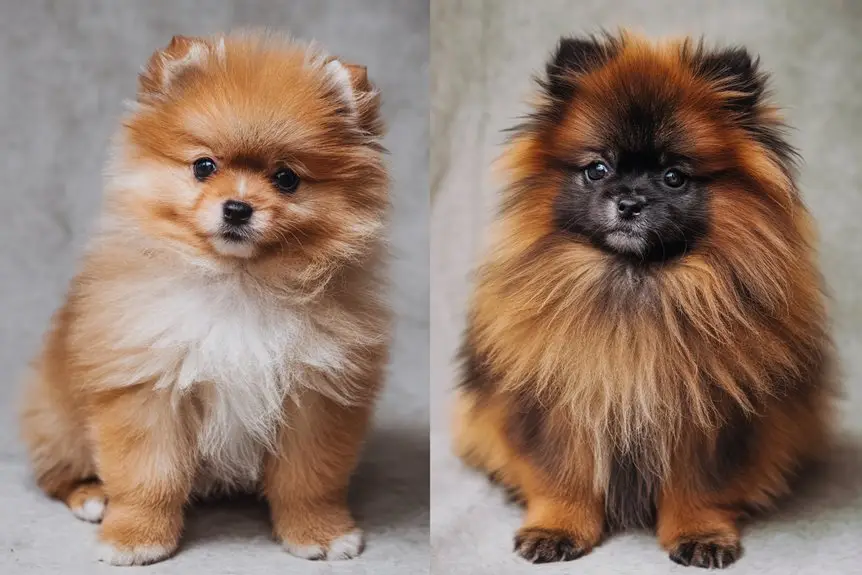
Looking after your Pom's fluffy coat isn't as tough as you might think – it just takes some regular care with grooming, food, and keeping an eye on their health.
For grooming, give your pup a bath every 1-3 weeks with gentle shampoo and a bit of conditioner. Use warm (not hot!) water and pat them dry to keep their natural oils.
Between baths, grab a brush and clean up any dirty spots to stop their fur from getting tangled and help it grow nicely.
Food-wise, make sure your Pom gets enough omega-3s and omega-6s – these fats are super important for healthy fur.
And don't forget to keep their water bowl filled up so their coat stays nice and hydrated.
Keep an eye out for anything unusual, like scratching that might mean allergies or changes that could signal thyroid issues.
Your vet's your buddy here – they'll help you tackle any problems that might mess with your Pom's gorgeous fur.
Using a Furminator de-shedding tool regularly will help remove loose fur and promote a healthier coat and skin.
Frequently Asked Questions
Can Medication or Stress Cause Temporary Changes in a Pomeranian's Coat Texture?
Yeah, meds and stress can totally mess with your Pom's fur for a bit! You might spot their usually soft coat getting a bit weird – maybe not as puffy as normal or dropping out more than usual. But no need to panic – once things get back to normal, their coat usually bounces right back with some good TLC.
Do Pomeranians With Different Coat Colors Shed at Different Rates?
Just so you know – whether your Pom rocks a black, brown, or orange coat, they'll all shed the same way! Every single Pom out there sheds with the seasons, but the color of their fur has nothing to do with how much hair ends up on your couch. What really matters is how healthy they are, where you live, and how well you take care of their fluffy coat.
Why Do Some Pomeranians Have Curlier Fur Than Others?
The curliness in your Pom's coat mostly boils down to what's in their DNA, especially stuff like the KRT71 gene. Sure, how you brush and groom them can change how curly they look, but it's really just the genes they got from their parents doing their thing!
Can Spaying or Neutering Affect a Pomeranian's Coat Quality?
Let me tell ya – spaying or neutering can totally mess with your Pom's fur, kind of like when your hair doesn't want to behave! Once those hormones start changing, your fluffball might end up with an even fluffier, super-soft coat. This means you'll probably need to grab that brush more often to keep your little buddy looking fabulous!
Do Seasonal Changes Affect the Thickness of a Pomeranian's Undercoat?
Yup, your Pom's undercoat totally changes up depending on the season! In spring and fall, you'll see them dropping a bunch of fur as their undercoat thins out – it's just their way of getting ready for different weather patterns. It's super normal for these fluffy little pups to go through this kind of seasonal fur change!
